Abstract
The mean size and percentage of budded cells of a wild-type haploid strain of Saccharomyces cerevisiae grown in batch culture over a wide range of doubling times (tau) have been measured using microscopic measurements and a particle size analyzer. Mean size increased over a 2.5-fold range with increasing growth rate (from tau = 450 min to tau = 75 min). Mean size is principally a function of growth rate and not of a particular carbon source. The duration of the budded phase increased at slow growth rates according to the empirical equation, budded phase = 0.5 tau + 27 (all in minutes). Using a recent model of the cell cycle in which division is thought to be asymmetric, equations have been derived for mean cell age and mean cell volume. The data are consistent with the notion that initiation of the cell cycle occurs at "start" after attainment of a critical cell size, and this size is dependent on growth rate, being, at slow growth rates, 63% of the volume of fast growth rates. Previous reports are reanalyzed in the light of the unequal division model and associated population equations.
Full text
PDF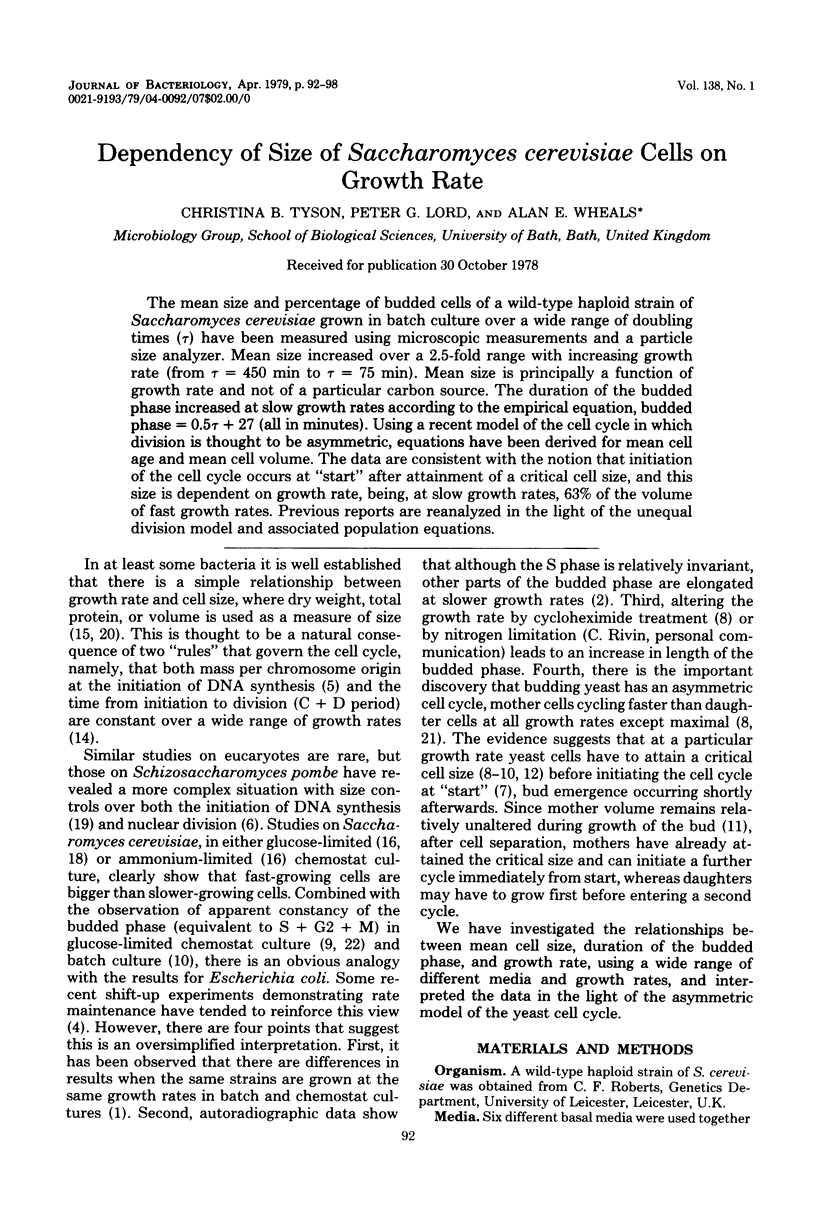
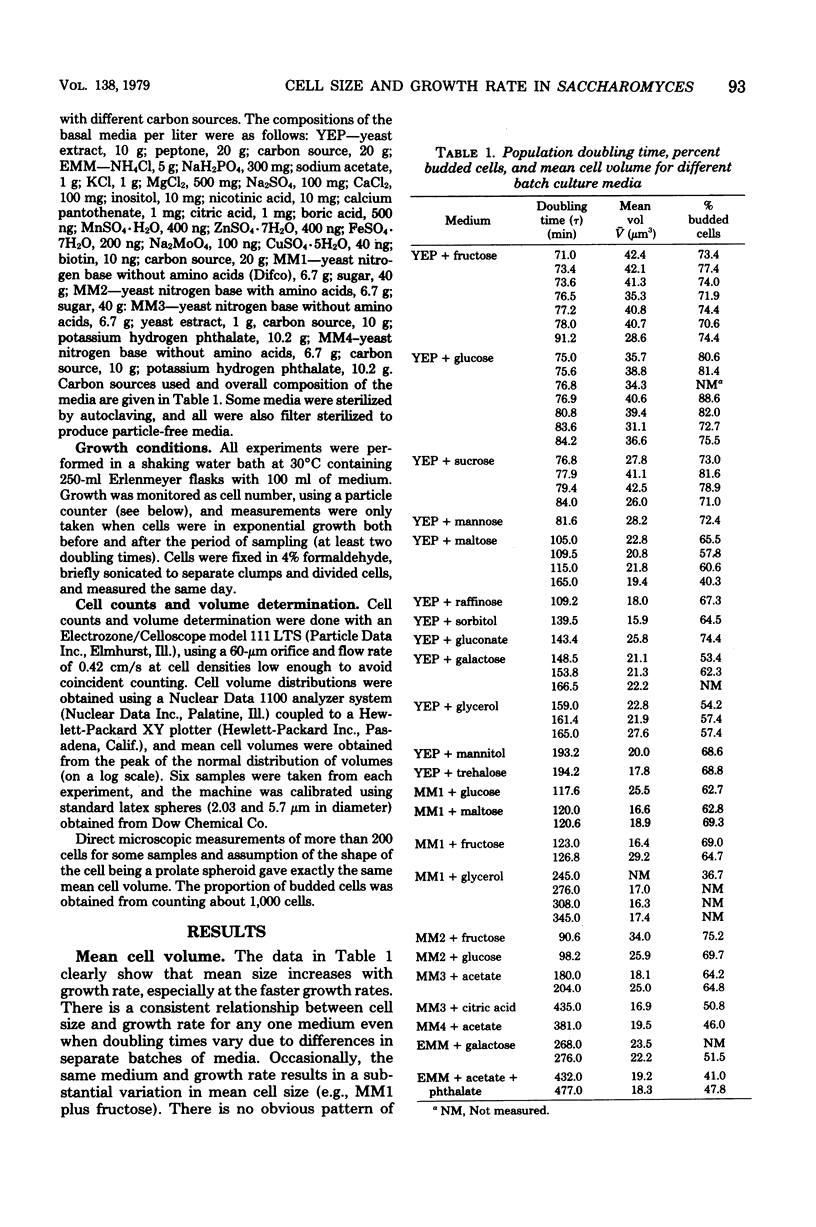
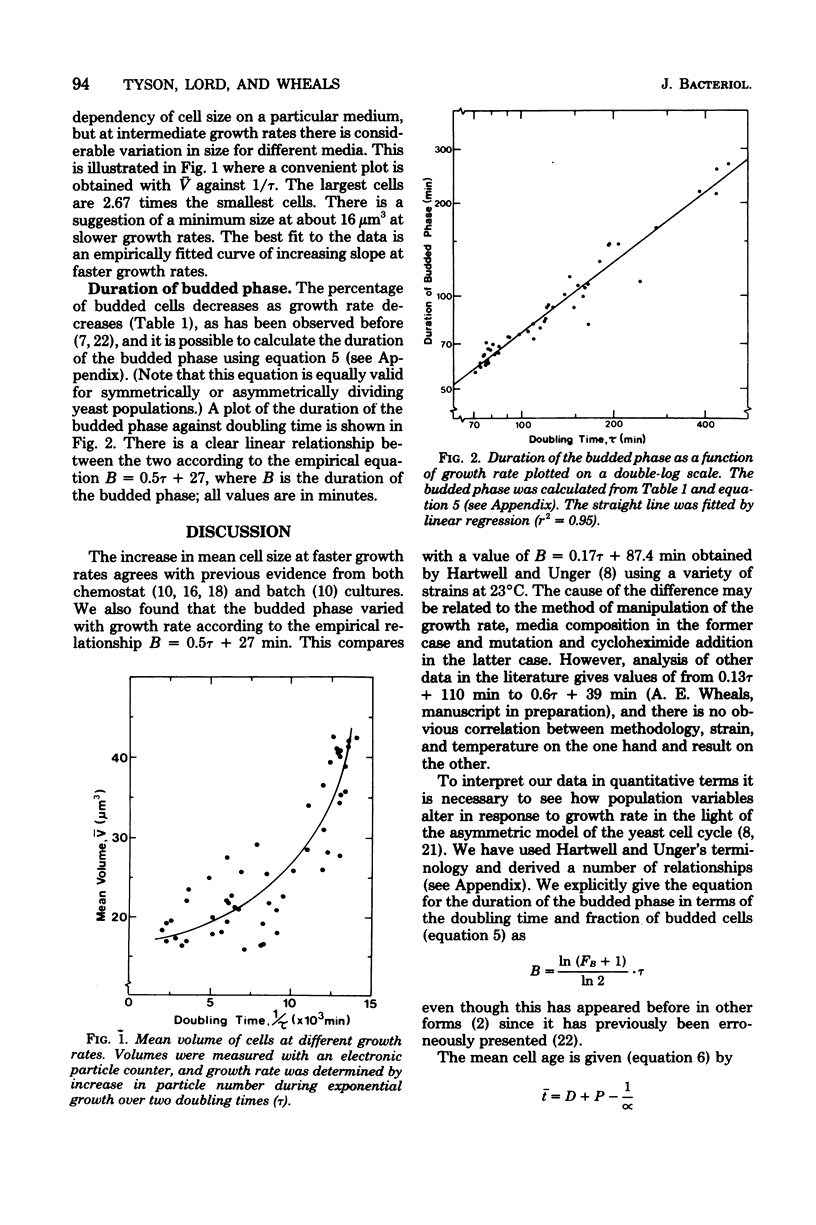
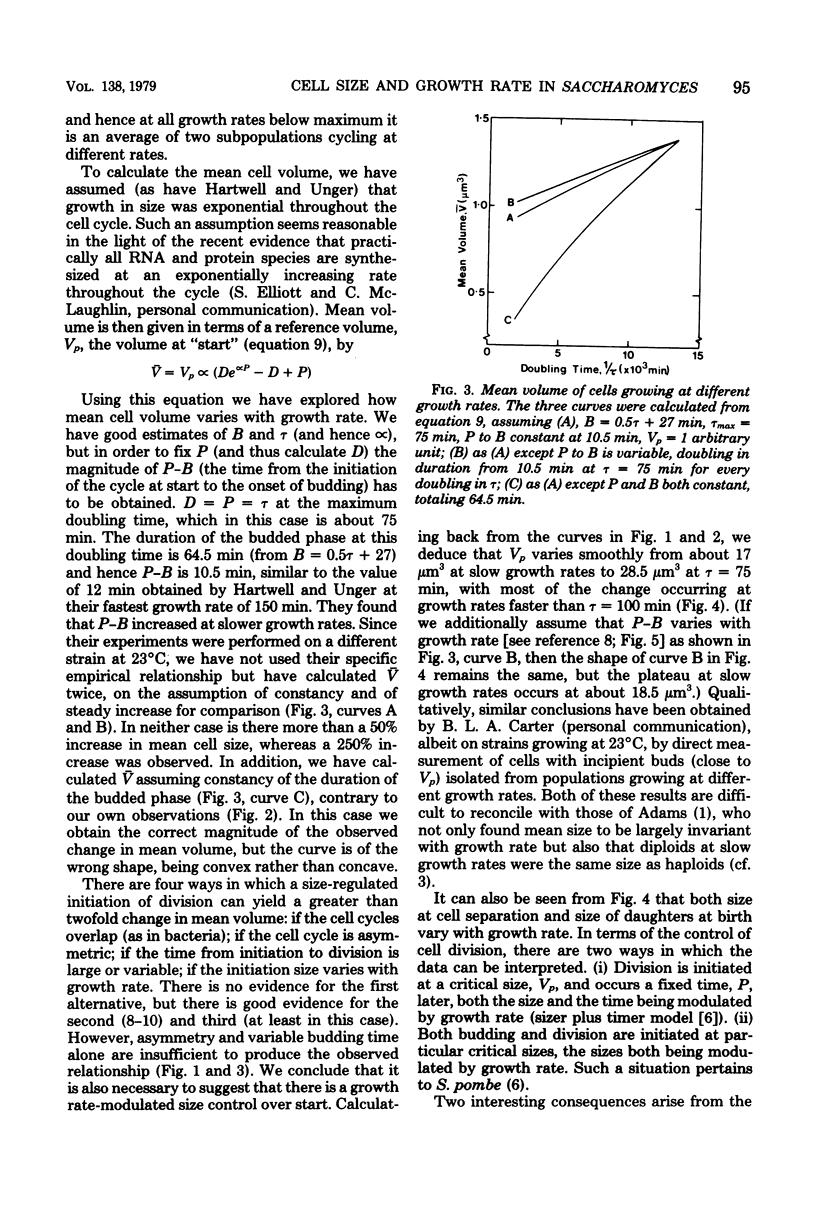
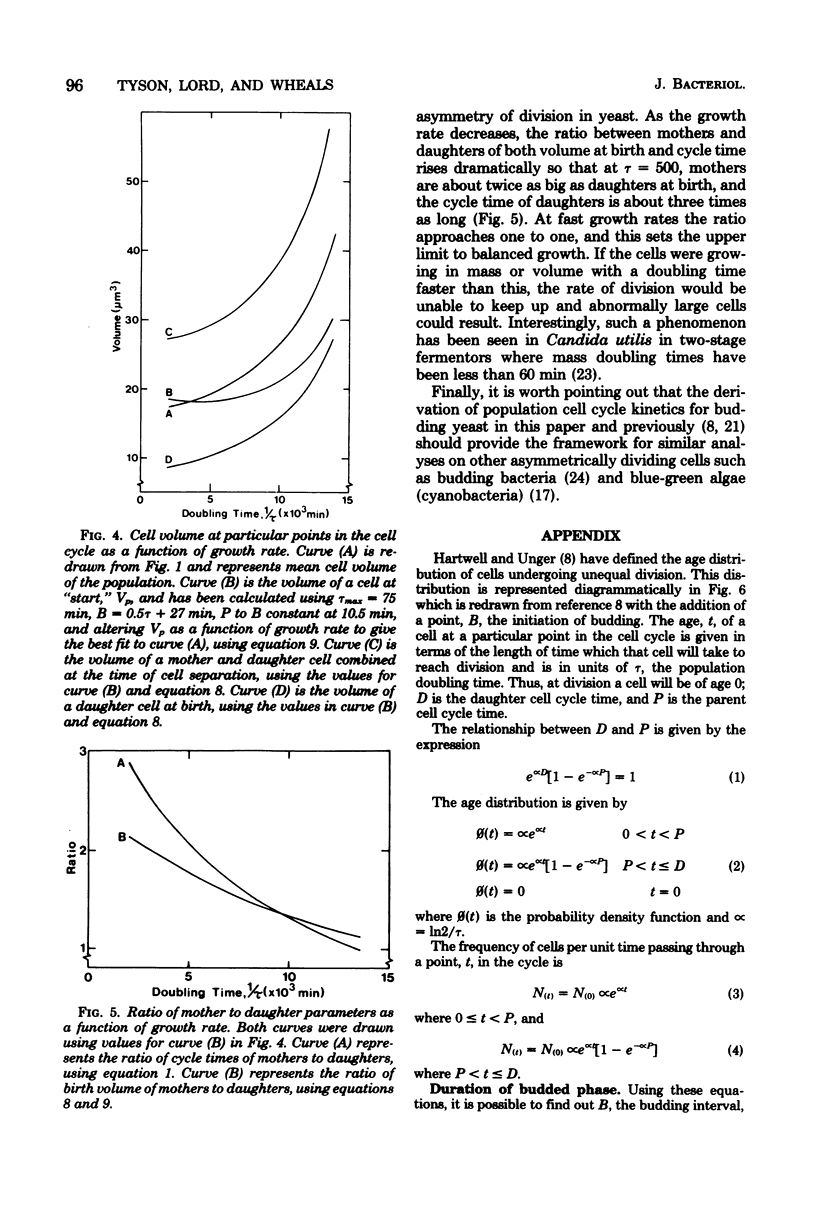
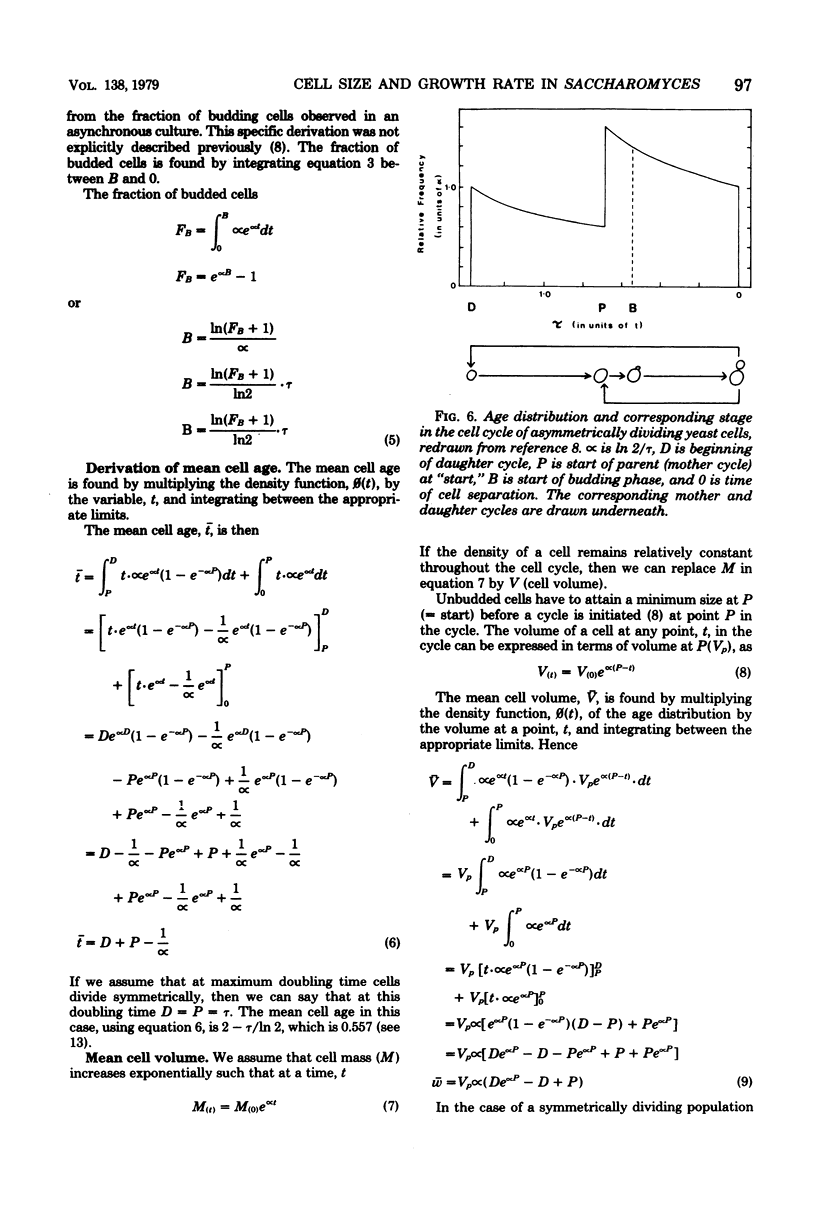
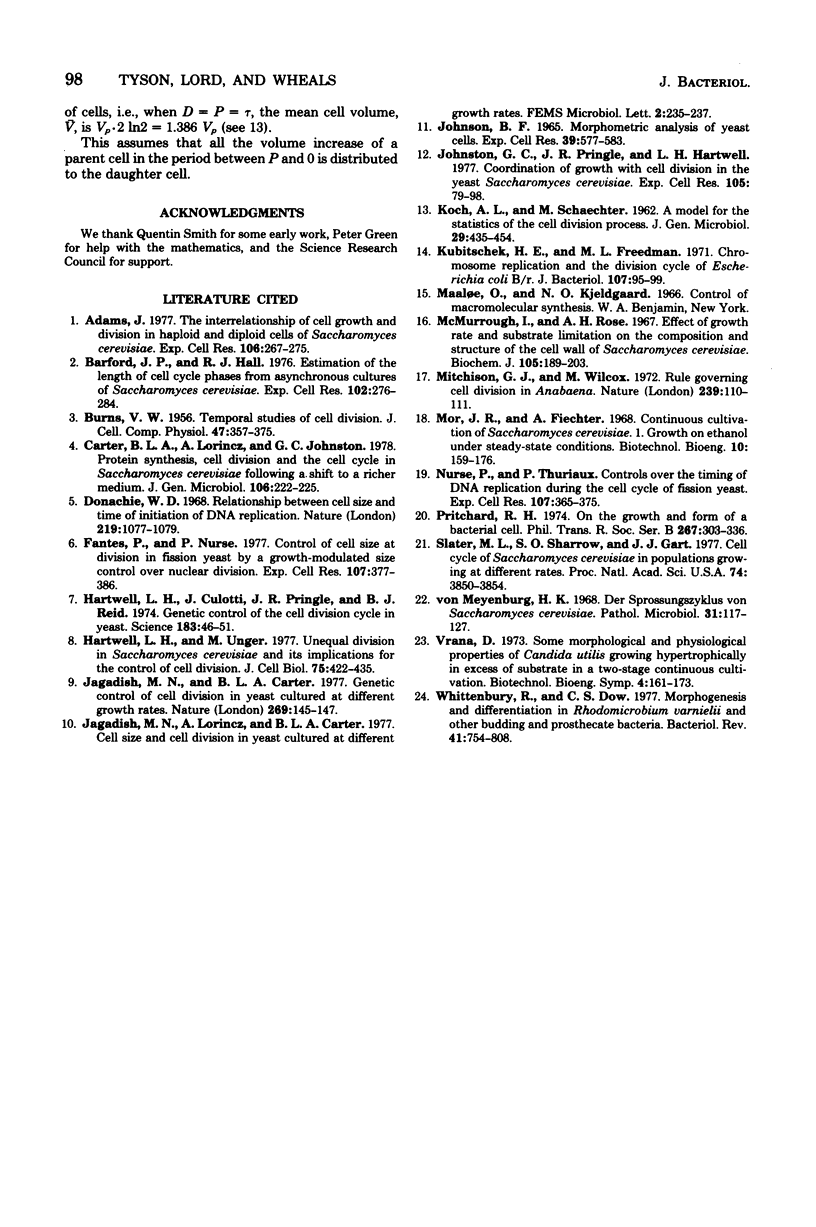
Selected References
These references are in PubMed. This may not be the complete list of references from this article.
- Adams J. The interrelationship of cell growth and division in haploid and diploid cells of Saccharomyces cerevisiae. Exp Cell Res. 1977 May;106(2):267–275. doi: 10.1016/0014-4827(77)90172-0. [DOI] [PubMed] [Google Scholar]
- BURNS V. W. Temporal studies of cell division. I. The influence of ploidy and temperature on cell division in S. cerevisiae. J Cell Physiol. 1956 Jun;47(3):357–375. doi: 10.1002/jcp.1030470305. [DOI] [PubMed] [Google Scholar]
- Barford J. P., Hall R. J. Estimation of the length of cell cycle phases from asynchronous cultures of Saccharomyces cerevisiae. Exp Cell Res. 1976 Oct 15;102(2):276–284. doi: 10.1016/0014-4827(76)90043-4. [DOI] [PubMed] [Google Scholar]
- Donachie W. D. Relationship between cell size and time of initiation of DNA replication. Nature. 1968 Sep 7;219(5158):1077–1079. doi: 10.1038/2191077a0. [DOI] [PubMed] [Google Scholar]
- Fantes P., Nurse P. Control of cell size at division in fission yeast by a growth-modulated size control over nuclear division. Exp Cell Res. 1977 Jul;107(2):377–386. doi: 10.1016/0014-4827(77)90359-7. [DOI] [PubMed] [Google Scholar]
- Hartwell L. H., Culotti J., Pringle J. R., Reid B. J. Genetic control of the cell division cycle in yeast. Science. 1974 Jan 11;183(4120):46–51. doi: 10.1126/science.183.4120.46. [DOI] [PubMed] [Google Scholar]
- Hartwell L. H., Unger M. W. Unequal division in Saccharomyces cerevisiae and its implications for the control of cell division. J Cell Biol. 1977 Nov;75(2 Pt 1):422–435. doi: 10.1083/jcb.75.2.422. [DOI] [PMC free article] [PubMed] [Google Scholar]
- Jagadish M. N., Carter B. L. Genetic control of cell division in yeast cultured at different growth rates. Nature. 1977 Sep 8;269(5624):145–147. doi: 10.1038/269145a0. [DOI] [PubMed] [Google Scholar]
- Johnson B. F. Morphometric analysis of yeast cells. Adult cell volume of Saccharomyces cerevisiae. Exp Cell Res. 1965 Sep;39(2):577–583. doi: 10.1016/0014-4827(65)90059-5. [DOI] [PubMed] [Google Scholar]
- Johnston G. C., Pringle J. R., Hartwell L. H. Coordination of growth with cell division in the yeast Saccharomyces cerevisiae. Exp Cell Res. 1977 Mar 1;105(1):79–98. doi: 10.1016/0014-4827(77)90154-9. [DOI] [PubMed] [Google Scholar]
- KOCH A. L., SCHAECHTER M. A model for statistics of the cell division process. J Gen Microbiol. 1962 Nov;29:435–454. doi: 10.1099/00221287-29-3-435. [DOI] [PubMed] [Google Scholar]
- Kubitschek H. E., Freedman M. L. Chromosome replication and the division cycle of Escherichia coli B-r. J Bacteriol. 1971 Jul;107(1):95–99. doi: 10.1128/jb.107.1.95-99.1971. [DOI] [PMC free article] [PubMed] [Google Scholar]
- McMurrough I., Rose A. H. Effect of growth rate and substrate limitation on the composition and structure of the cell wall of Saccharomyces cerevisiae. Biochem J. 1967 Oct;105(1):189–203. doi: 10.1042/bj1050189. [DOI] [PMC free article] [PubMed] [Google Scholar]
- Pritchard R. H. Review lecture on the growth and form of a bacterial cell. Philos Trans R Soc Lond B Biol Sci. 1974 Feb 21;267(886):303–336. doi: 10.1098/rstb.1974.0003. [DOI] [PubMed] [Google Scholar]
- Slater M. L., Sharrow S. O., Gart J. J. Cell cycle of Saccharomycescerevisiae in populations growing at different rates. Proc Natl Acad Sci U S A. 1977 Sep;74(9):3850–3854. doi: 10.1073/pnas.74.9.3850. [DOI] [PMC free article] [PubMed] [Google Scholar]
- Vraná D. Some morphological and physiological properties of Candida utilis growing "hypertrophically" in excess of substrate in a two-stage continuous cultivation. Biotechnol Bioeng Symp. 1973;0(4-1):161–173. [PubMed] [Google Scholar]
- Whittenbury R., Dow C. S. Morphogenesis and differentiation in Rhodomicrobium vannielii and other budding and prosthecate bacteria. Bacteriol Rev. 1977 Sep;41(3):754–808. doi: 10.1128/br.41.3.754-808.1977. [DOI] [PMC free article] [PubMed] [Google Scholar]
- von Meyenburg H. K. Der Sprossungszyklus von Saccharomyces cerevisiae. Pathol Microbiol (Basel) 1968;31(2):117–127. [PubMed] [Google Scholar]


